Discover 10 hidden attractions, cool sights, and unusual things to do in Armagh (United Kingdom). Don't miss out on these must-see attractions: St Patrick's Cathedral, Archbishop's Palace, and St Patrick's Cathedral. Also, be sure to include Armagh County Museum in your itinerary.
Below, you can find the list of the most amazing places you should visit in Armagh (Northern Ireland).
Table of Contents
St Patrick's Cathedral
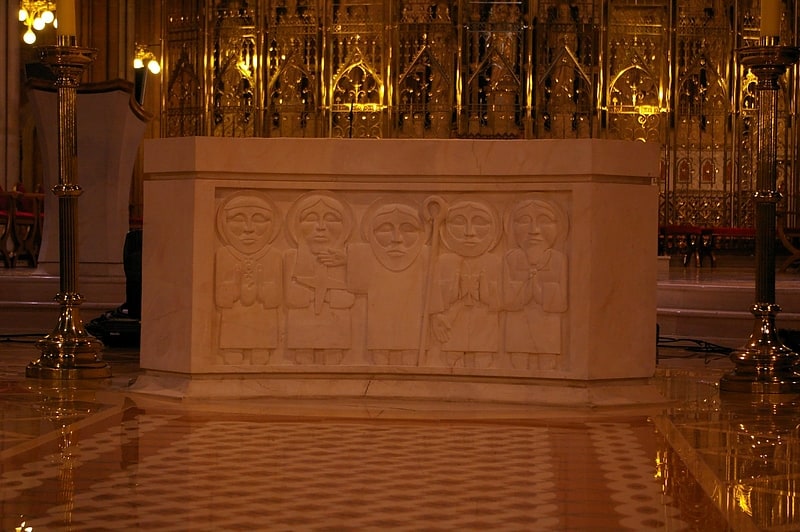
Cathedral in Armagh, Northern Ireland. St. Patrick's Cathedral in Armagh, Northern Ireland is the seat of the Catholic Archbishop of Armagh, Primate of All Ireland. It was built in various phases between 1840 and 1904 to serve as the Roman Catholic Cathedral of the Archdiocese of Armagh, the original Medieval Cathedral of St. Patrick having been appropriated by the state church called the Church of Ireland at the time of the Irish Reformation.
The Cathedral stands on a hill, as does its Anglican counterpart.[1]
Address: 72 Cathedral Rd, BT61 8AG Armagh
Archbishop's Palace
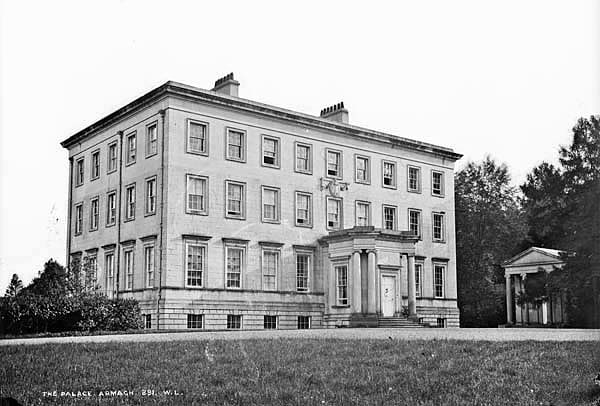
The Archbishop's Palace, Armagh, Northern Ireland, is a landmark Neo-Classical building located on 300 acres of parkland just south of the centre of the city. The building served as primary residence of the Church of Ireland Archbishops of Armagh for over two hundred years, from 1770 to 1975, and thereafter as headquarters of Armagh City and District Council from then until April 2015 when that local authority was replaced following the reform of local government in Northern Ireland in that year.
The Palace was built when then Archbishop Richard Robinson sought to relocate the principal residence of the archbishops from Drogheda to the titular city of his office. Thomas Cooley undertook the design of the initial building and Francis Johnston was responsible for designing an additional floor at a later stage. The palace currently sits at the centre of the Palace Demesne Public Park, and serves as the office of the Lord Mayor of the new Armagh, Banbridge, and Craigavon Borough.
The building became protected as a Grade A listed building (HB 15/18/016) in 1975.[2]
St Patrick's Cathedral
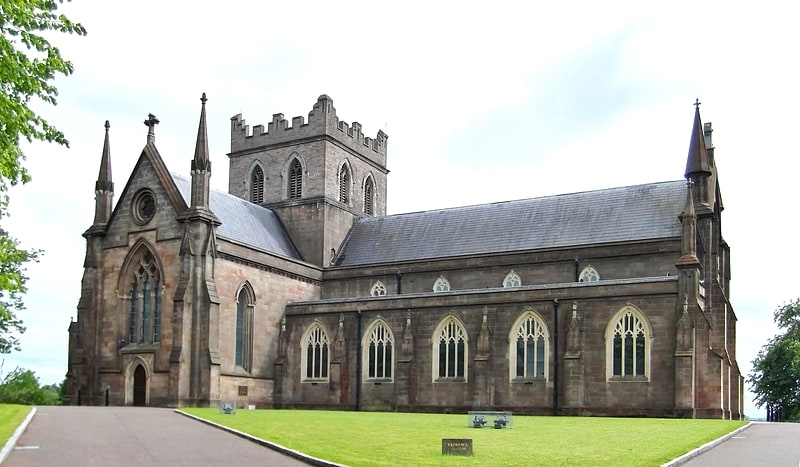
Stone-built Anglican cathedral and mosaics. St Patrick's Cathedral, Armagh is a cathedral located in Armagh, Northern Ireland. The origins of the site are as a 5th century Irish stone monastery, founded by St. Patrick. Throughout the Middle Ages, the cathedral was the seat of the Archbishop of Armagh, the premier see of the Catholic Church in Ireland and formed a significant part of the culture of Christianity in Gaelic Ireland. With the advent of the 16th century and the introduction of Protestantism into Ireland, the cathedral came under the Anglican Church of Ireland, with Englishman, George Cromer, acting as the first Anglican Archbishop of Armagh in the Church of Ireland and remains under their control to this day. It is also the cathedral of the Anglican Diocese of Armagh. In the 19th century, following Catholic Emancipation, Irish Catholics founded a new cathedral in Armagh, also named for St. Patrick: the two should not be confused.[3]
Address: 46 Abbey St, BT61 7DZ Armagh
Armagh County Museum
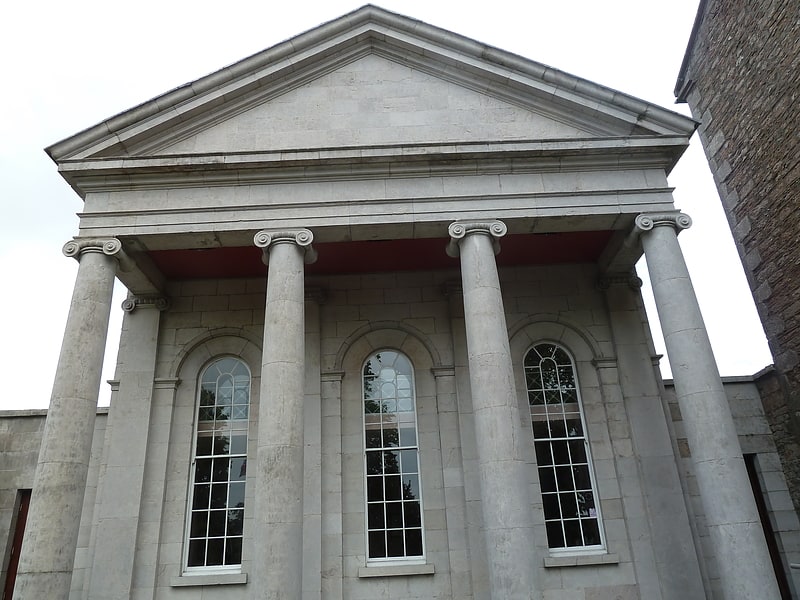
Museum in Armagh, Northern Ireland. The Armagh County Museum is a museum in Armagh, County Armagh, Northern Ireland. Located on the edge of the tree-lined Mall in the centre of Armagh city, the museum is the oldest County Museum in Ireland and was officially opened in 1937.[4]
Address: The Mall East, BT61 9BE Armagh
Royal Irish Fusiliers Museum

Museum in Armagh, Northern Ireland. The Royal Irish Fusiliers Museum is a military museum based in Sovereign's House at Armagh, Northern Ireland. The museum is a Grade B listed building.[5]
Address: The Mall, BT61 9DL Armagh
Armagh Planetarium

Planetarium in Armagh, Northern Ireland. Armagh Planetarium is a planetarium located in Armagh, Northern Ireland close to the city centre and neighbouring Armagh Observatory in approximately fourteen acres of landscaped grounds known as the Armagh Astropark.[6]
Address: College Hill, Armagh
Gosford Forest Park
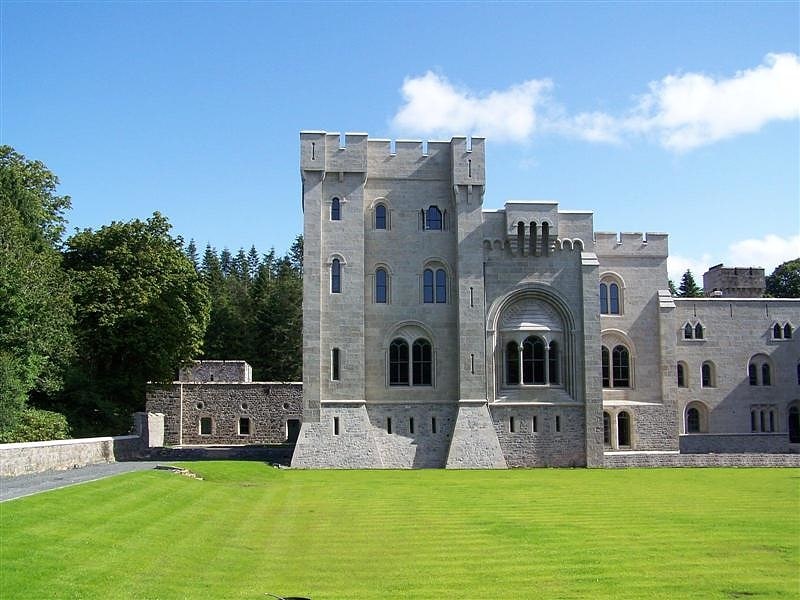
Park in Northern Ireland. Gosford Forest Park is a forest park located outside Markethill, County Armagh, Northern Ireland. The park, previously Gosford Demesne, was acquired by the Department of Agriculture in 1958 and comprises some 240 hectares of diverse woodland and open parkland. Gosford Forest Park is also home to Gosford Castle. It was designated the first conservation forest in Northern Ireland in 1986.[7]
Address: 48 Gosford Road, BT60 1UG Armagh
HM Prison Armagh
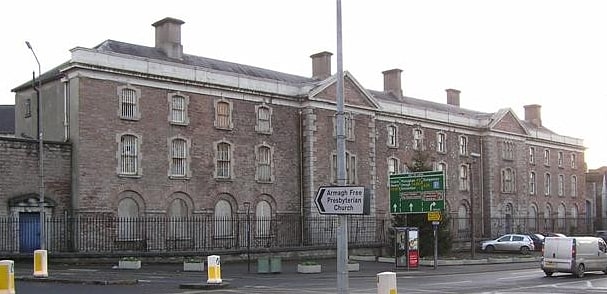
Armagh Prison in Armagh, Northern Ireland, is a former prison. The construction of the prison began in the 1780 and it was extended in the style of Pentonville Prison in the 1840 and 1850s. For most of its working life Armagh Gaol was the primary women's prison in Ulster. Although the prison is often described as Armagh Women's Gaol, at various points in its history, various wings in the prison were used to hold male prisoners.
During the period of the internment, 33 republican women were interned in the prison from 1973 to 1975.
On 19 April 1979, Agnes Wallace, a prison officer, was shot dead and three colleagues were injured in an Irish National Liberation Army gun and grenade attack outside the prison.
The prison was the scene of a protest by female Irish republican prisoners demanding the reinstatement of political status, although the numbers involved were much smaller than in the Maze men's prison. As all women prisoners in Northern Ireland already had the right to wear their own clothes, they did not stage any sort of blanket protest, but the no wash protest included the smearing of menstrual blood on the cell walls. Three women in Armagh took part in the 1980 hunger strike: Mairéad Nugent, Mary Doyle and Mairéad Farrell, who was killed by the Special Air Service in Gibraltar in 1988. No Armagh prisoners took part in the 1981 Irish hunger strike.
The prison closed in 1986. In 2009 it was announced that the prison was to become a hotel.
Armagh Prison was the subject of one of the so-called Black Spider Memos written by Charles, Prince of Wales to the Secretary of State for Northern Ireland in 2004.[8]
Armagh Courthouse
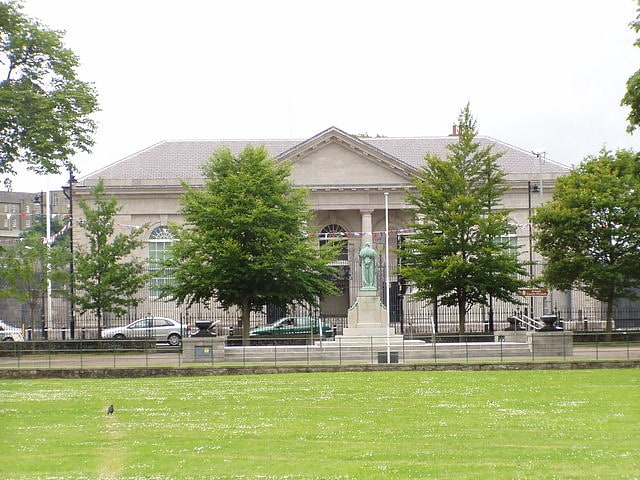
Courthouse in Armagh, Northern Ireland. Armagh Courthouse is a judicial facility in Armagh, County Armagh, Northern Ireland. The courthouse, which accommodates hearings for the local magistrates' courts and county courts, is a Grade A listed building.[9]
Address: 40 Upper English Street, BT61 7BA Armagh
Charlemont Place
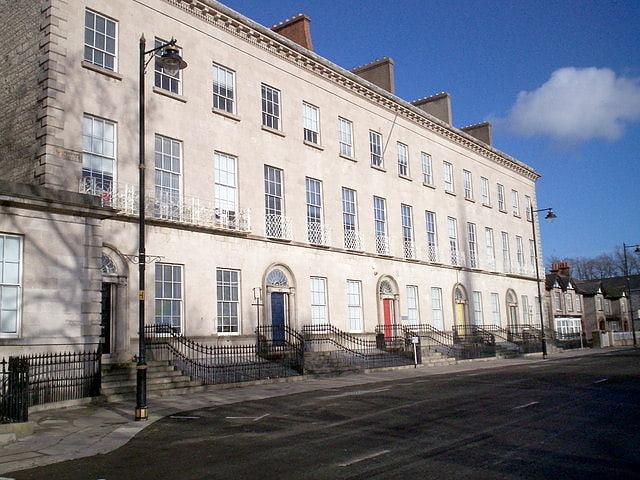
Charlemont Place is a row of terraced houses in Armagh, County Armagh, Northern Ireland. The buildings served as the headquarters of Armagh County Council from 1945 to 1973. They are all Grade A listed buildings.[10]